How to Choose the Right Windscreen for Your Motorcycle
Looking for a motorcycle windscreen? We’ll cover the ins and outs of picking the proper windscreen for you and your motorcycle
Motorcycles are visceral machines, and that’s a major part of why we like them. We’ve got the wind in our hair and nature whizzing by our side, delivering all the sights, sounds, and smells we can handle. Heck, we’ve got the bugs in our teeth to prove it! Some riders prefer to take it all in, while others look to windscreens for an added layer of protection when out on the open road. Choosing a suitable windscreen can dramatically improve the riding experience for various reasons, but what’s the right one for you? We’ll tackle windscreens head-on, covering everything from size, shape, and color to help you make the most informed decision possible.
Promoted Product: Klock Werks Dark Smoke 14 in. Sport Flare Windshield
The Klock Werks Dark Smoke 14-inch Sport Flare Windshield is engineered with state-of-the-art wind tunnel testing to redirect air over the rider and reduce wind buffeting, dramatically improving comfort. Klock Werks says that its specially designed hips also provide downforce for additional stability at higher speeds. Durability is ensured with Lexan® Polycarbonate and an FMR hard coating, helping the Sport Flare Windshield withstand impacts from road debris year after year. No need for extra hardware or drilling — this predrilled windshield utilizes O.E.M. hardware, saving you time, effort, and money when switching to this high-quality American-made product.
Use the Dennis Kirk My Garage Tool to check the fitment of your motorcycle.
Why Add or Change My Windscreen?
Windscreens are straightforward devices that come in all shapes and sizes. Some are focused purely on function, while others are there for style—there truly is an option for everyone on the market. Most buyers seek windscreens because of the inherent comfort benefits of blocking the breeze.
Why would we want that? Not everyone is keen on having that much proverbial wind in their hair. The core job of a well-designed windscreen is to deflect wind above and around a rider, dramatically reducing wind resistance on said rider. In addition, windscreens protect riders from elements like rain, guard against debris and bugs, and reduce fatigue.
Size Matters: Selecting the Right Height
Owners can have as much or as little wind protection as they’d like when it comes to windscreens, and it all comes down to size and, more particularly, height. These aren’t one-size-fits-all discussions because what works for your buddy might not work for you. If you’re constantly experiencing buffeting (air making your helmet bobble), your screen is probably too short.
Windscreen manufacturers often use motorcycle-friendly terminology to describe their size ranges, with shorter “Sport” or “Sport-Touring” options sitting at one end, “Standard” in the middle, and taller “Touring” at the opposite end of the sizing spectrum. From that, we can assume that a Sport windscreen offers the least amount of wind protection while a Touring windscreen offers the maximum coverage.
Width is also a consideration because selecting something too narrow won’t provide as much protection. Always reach for a unit at least as wide as your shoulders for the utmost shielding.
What’s right for you will entirely depend on your application. Naked bikes can benefit from any wind protection added to help take the edge off. Meanwhile, touring riders will steer toward anything that can keep them going longer. That still leaves everything in between, too!
Those wishing to enhance wind protection significantly will want sizable units bolted onto their machines. That leaves the question of whether you want to “look over” a windscreen or attach a full-sized unit that you will “look through.”
There are some advantages and drawbacks to both of them. For example, “looking over” your windscreen will allow for an unobstructed view of the road without the windscreen’s edge in your line of sight. This is a smart consideration for ADV riders who might splash their windscreen with muddy water or get it covered in dust, obscuring one’s vision.
Meanwhile, a large windscreen that the rider “looks through” reduces airflow massively and is a good option for anyone planning on riding long distances through varied weather. However, too little airflow can be a disadvantage in hot weather. In addition, riders might experience glare and will need to keep these windscreens clean to avoid compromising your view.
How to Measure A Windscreen
There are two schools of thought when measuring full-sized windscreens. Still, for the most accurate results, we strongly consider seeking out the manufacturer-suggested processes because they are all different depending on the make, model, and type of motorcycle you own. However, there are some rough guidelines we can follow in a pinch.
Let’s start with “look over” windscreens, which means that we’re trying to find a windscreen that will come to rest roughly between our nose and eyes when in a seated position on the motorcycle. If upgrading your current windscreen, measure the height from the center and bottom edge. This also applies to motorcycles with fairings (think Honda Gold Wing, Harley-Davidson Street/Road Glide, etc).
When dealing with a motorcycle that never had a windscreen, like a classic V-Twin cruiser, manufacturers will suggest measuring from the headlight unit and following the rake angle upward to the height of the rider’s nose. It might not hurt to enlist a friend for help with this. Again, we strongly encourage consulting the manufacturer for detailed instructions as they differ.
Riders wishing for the highest level of wind protection will want a “look through” windscreen. This process is relatively easy if your bike is equipped with a windscreen, as we’re simply looking for a unit that stops 2-3 inches above our helmet.
Also, remember that some aftermarket windscreen options come with adjustable mountain brackets, allowing owners to raise and lower within a short range. Following that logic are OEM windscreen mounts that can offer the same type of adjustment.
Color and Style
Sometimes, you just want something that looks cool, and the functional benefits are secondary. Perhaps a conventional clear screen isn’t for you. Windscreens are available in various tints, colors, and shades to match the theme of your motorcycle.
However, if you’re looking through your windscreen in any capacity, a clear windscreen is the only way to go – we’re talking about safety here, folks! A clear windscreen will offer the best view of the road and allow you to negotiate anything you might face in your path.
Related to style is the material choice often used by manufacturers, which is typically acrylic or polycarbonate plastics. Acrylic (sometimes called Lexan) is frequently more affordable, though it isn’t as shatter-resistant as alternatives. However, scratches and abrasions can often be buffed out and aren’t as susceptible to “yellowing” from UV rays as polycarbonate. On the higher end is polycarbonate, revered for its durability and shatterproofness. However, it is subject to discoloration when exposed to UV rays for long periods.
Hit the Road
Here’s the thing about wind protection for you and your bike: It’s all subjective, but there are chances to lose your way and pick something that isn’t in your best interest. Selecting the right windscreen will undoubtedly improve the riding experience on your motorcycle, reducing wind resistance and protecting you from whatever mother nature has to offer. As always, have any more helpful suggestions? Let us know in the comments below.
We are committed to finding, researching, and recommending the best products. We earn commissions from purchases you make using the retail links in our product reviews. Learn more about how this works.
Become a Motorcycle.com insider. Get the latest motorcycle news first by subscribing to our newsletter here.
More by Edward Narraca

















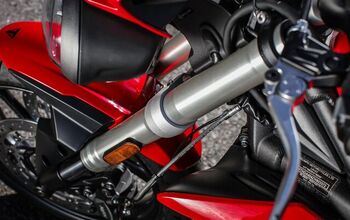



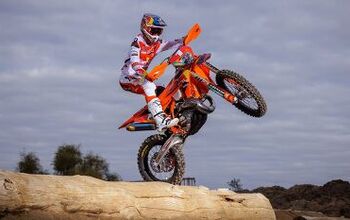
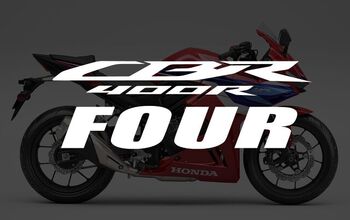



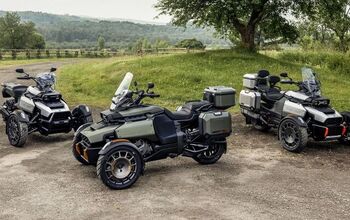

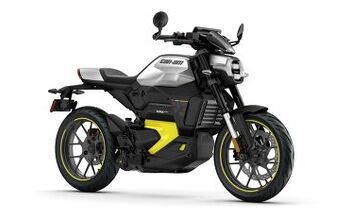
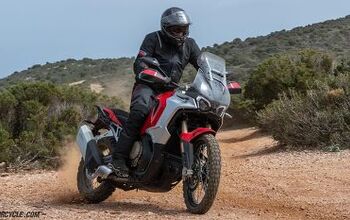





Comments
Join the conversation
At 6'5" tall, no windscreen really works well for me. Either I have to have a big barn door in front of my bike which I have to look through and I get that yucky low pressure "sucking" feeling...not to mention the heat in the summer...I am air cooled...like my motorcycle.....or I have to go short.
Short screens work best. Puts my helmet in clean air. Puts my body in clean cooling air. In the winter, I wear a heated jacket liner and pants liner. No windshields or fairings needed. Naked bike for the win!
Ready-made windshields run from cheap to very expensive. Custom windshields can run well over $500. One can also design and make there own windshield much cheaper. I bought a set of two acrylic panels, each 1/8" x 24" x 48", for a total of $50 -- or $25 per panel. One panel was large enough to make one windshield. If you already have a home shop, with tools and saws and drills, then the only other tool you might need is a heating tool , which you can also make for less than $10. Though I splurged on the heating by buying a made-in-China (?) unit for $65. This is was my first foray into cutting and bending acrylic panels. I was surprised by how easy and fast the process of actually cutting and bending the acrylic was. You see this process from start to finish on the following motorcycle website: https://www.yamahastarbolt.com/how-to's/making-my-own-windshield-29981/